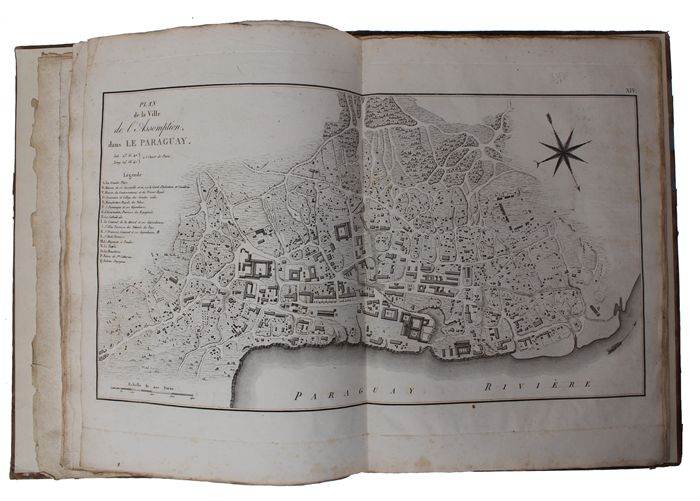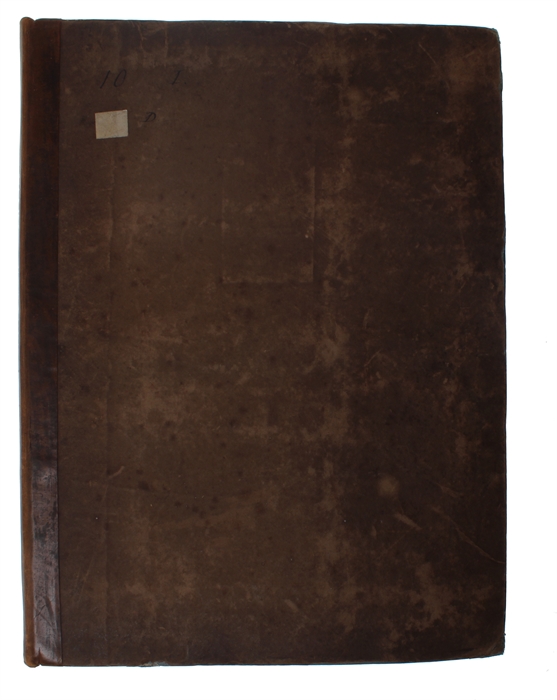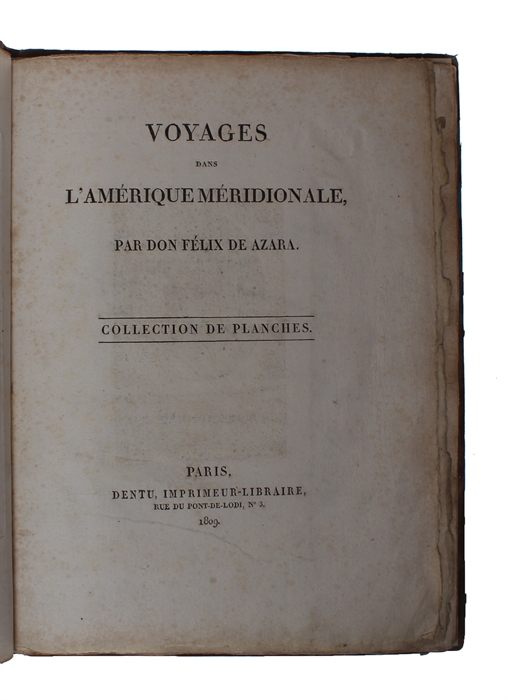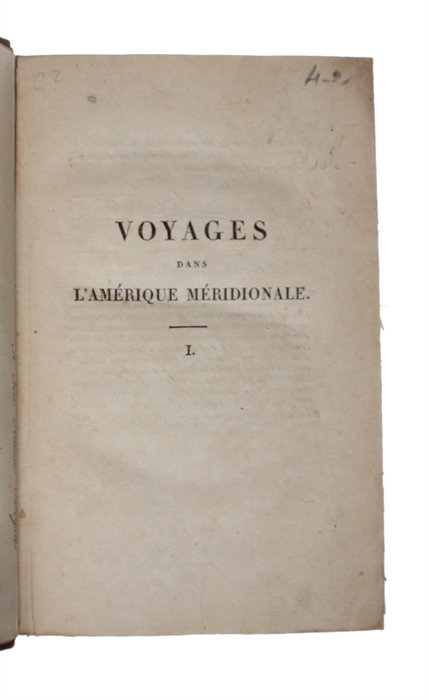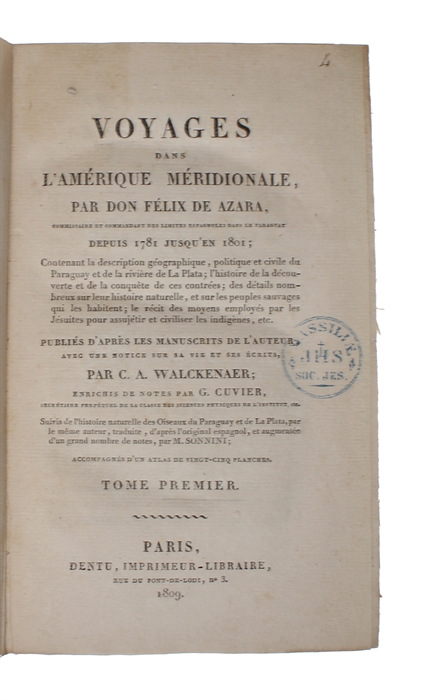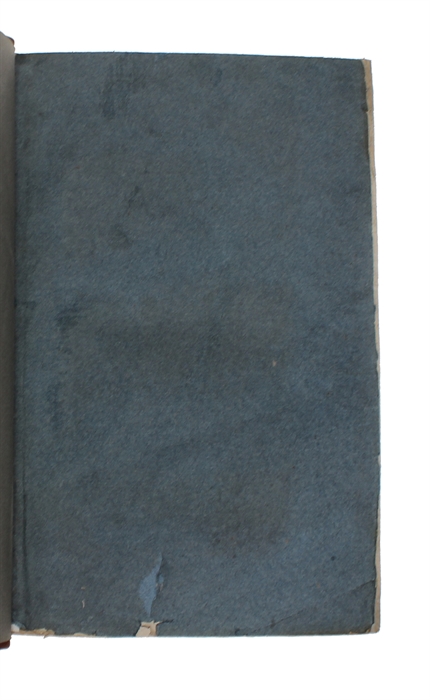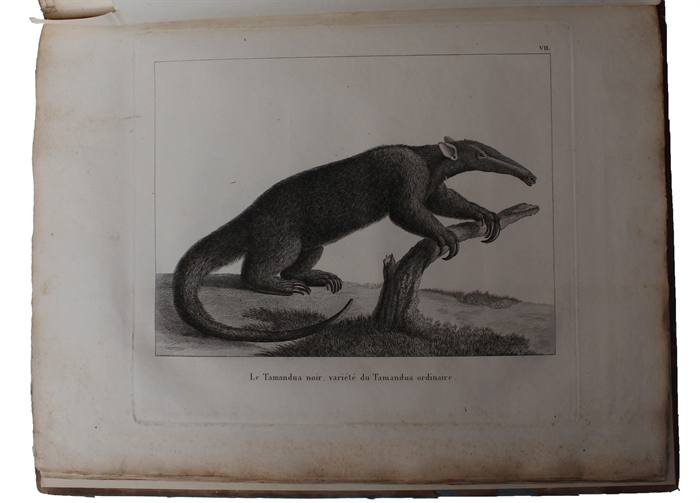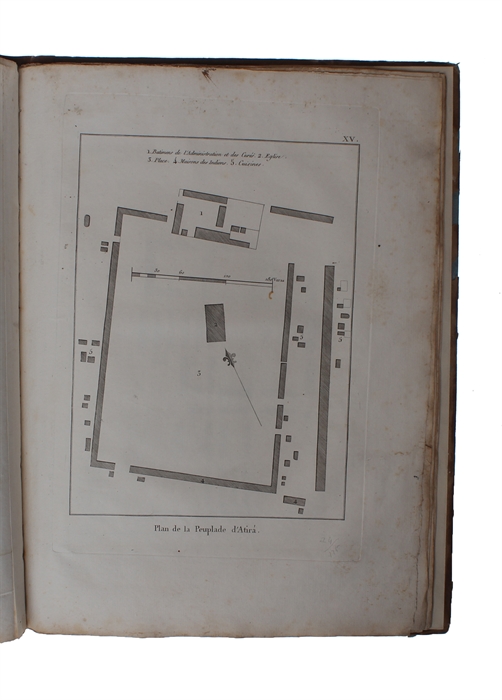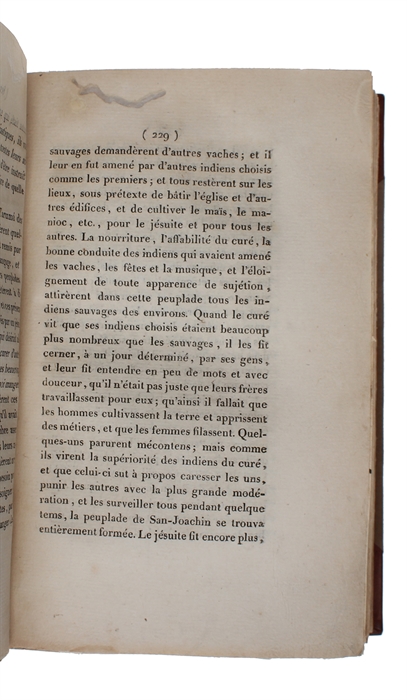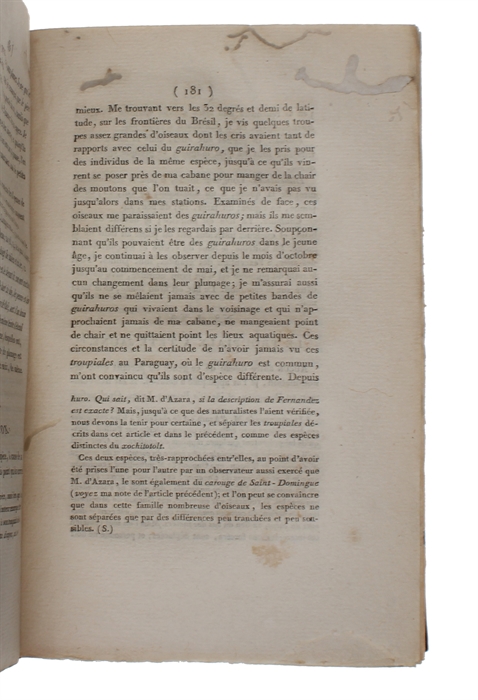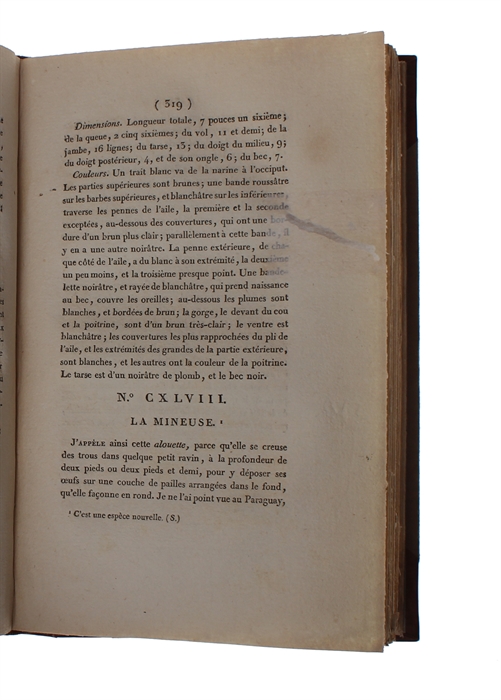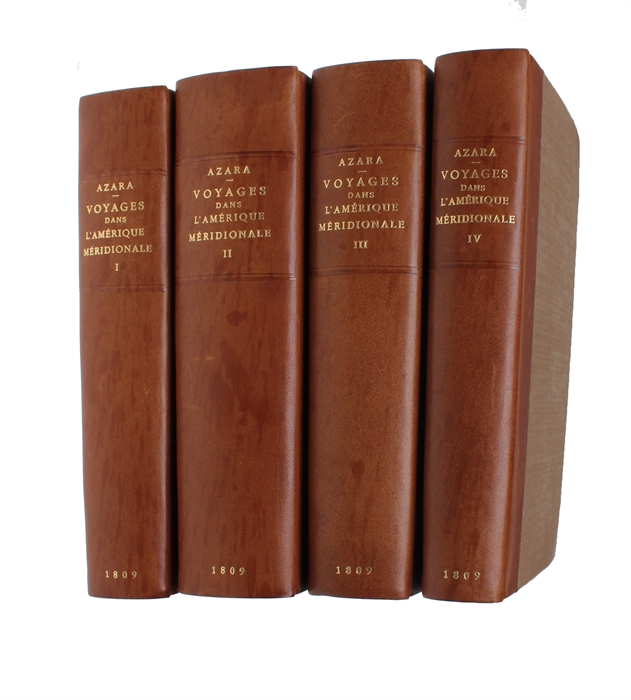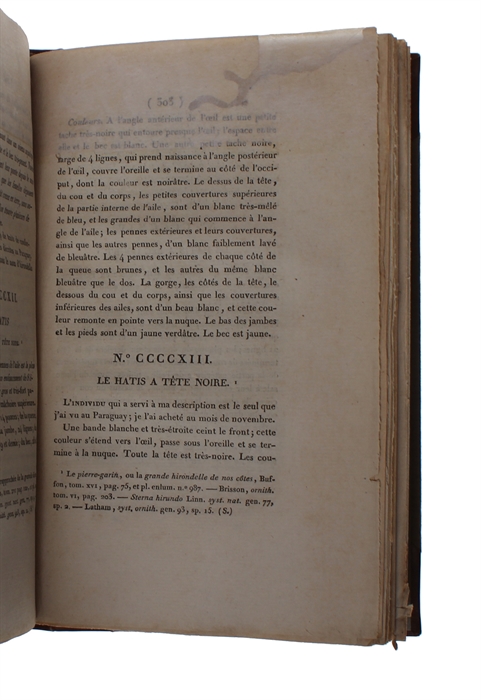MAIN WORK ON THE RIO DE LA PLATA-REGION
AZARA, FÉLIX MANUEL DE.
Voyages dans l'Amérique Méridionale, par Don Félix De Azara, Commissaire Et Commandant Des Limites Espagnoles Dans Le Paraguay, depuis 1781 jusqu'en 1801.
Paris, Dentu, 1809.
8vo & Folio. Four text-volumes and one atlas-volume.
Text-volumes uniformly bound (by Harry Larsen) uncut with contemporary blue blank wrappers in recent half calf with gilt lettering to spines. A stamp to title-page in all volumes. With repaired worm-tracts throughout, primarily affecting margins, but with occassional loss of text, otherwise internally clean. LX, 389; (4), 562 + three folding tables; (4), 479; (4), 380 pp.
Atlas-volume in contemporary half calf with gilt lettering to spine. Worm-tract to inner margin and light margin brownpostting. 25 numbered plates: An engraved portrait of the author, 5 detailed folded maps, 7 plates depicting animals, 8 city plans and views, including a double page plan and view of Buenos Aires, and four bird plates. A complete set.
The preferred first French edition of Azara's highly influential and important work on the region around Río de la Plata, here he charted the region while delineating the boundary between Spanish and Portuguese interests. His work, however, also included his observations on many topics ranging from the geography of the region to characteristics of the many indigenous groups and to zoology in the region. Consequently, he became a naturalist of some note, and Charles Darwin had a high regard for his work. In 1777, Spain and Portugal signed the Treaty of San Ildefonso. As dictated by the treaty, each nation would send a delegation to the Río de la Plata region to negotiate the border dispute between the Portuguese and Spanish colonies. Azara, being a Spanish military officer and engineer, was selected as a member of this delegation and departing quickly for the New World. The Portuguese delegation, however, never arrived, and Azara ended up remaining in the region from 1781 to 1801. In the 20 year period Azara ventured on several expedition in which he began observing the nature of the region. Over the course of his time there, he "described 448 birds...This number is reduced to 381 when duplications of sex, age, and plumage are taken into account (eight remain unidentified), and 178 of them are the types upon which the scientific names are based." (Beddall, "Isolated Spanish Genius. Palau 20975
He also identified 78 quadrupeds, 43 of which were new. A number of animals were named after him, including Azara's night monkey (Aotus azarae), Azara's agouti (Dasyprocta azarae), Azara's grass mouse (Akodon azarae), Azara's spinetail (Synallaxis azarae), and Azara's tree iguana (Liolaemus azarai ). Dorsum Azara on the Moon is also named after him.
The present work is by far the most extensive and wide-ranging work he published. Vol 3-4 and to a large extend translated from his "Apuntamientos para la historia natural de los pa?jaros del Paraguay y Rio de la Plata" (Madrid, 1802-05).
Sabin 2541
Wood, p. 214.
Order-nr.: 60270

